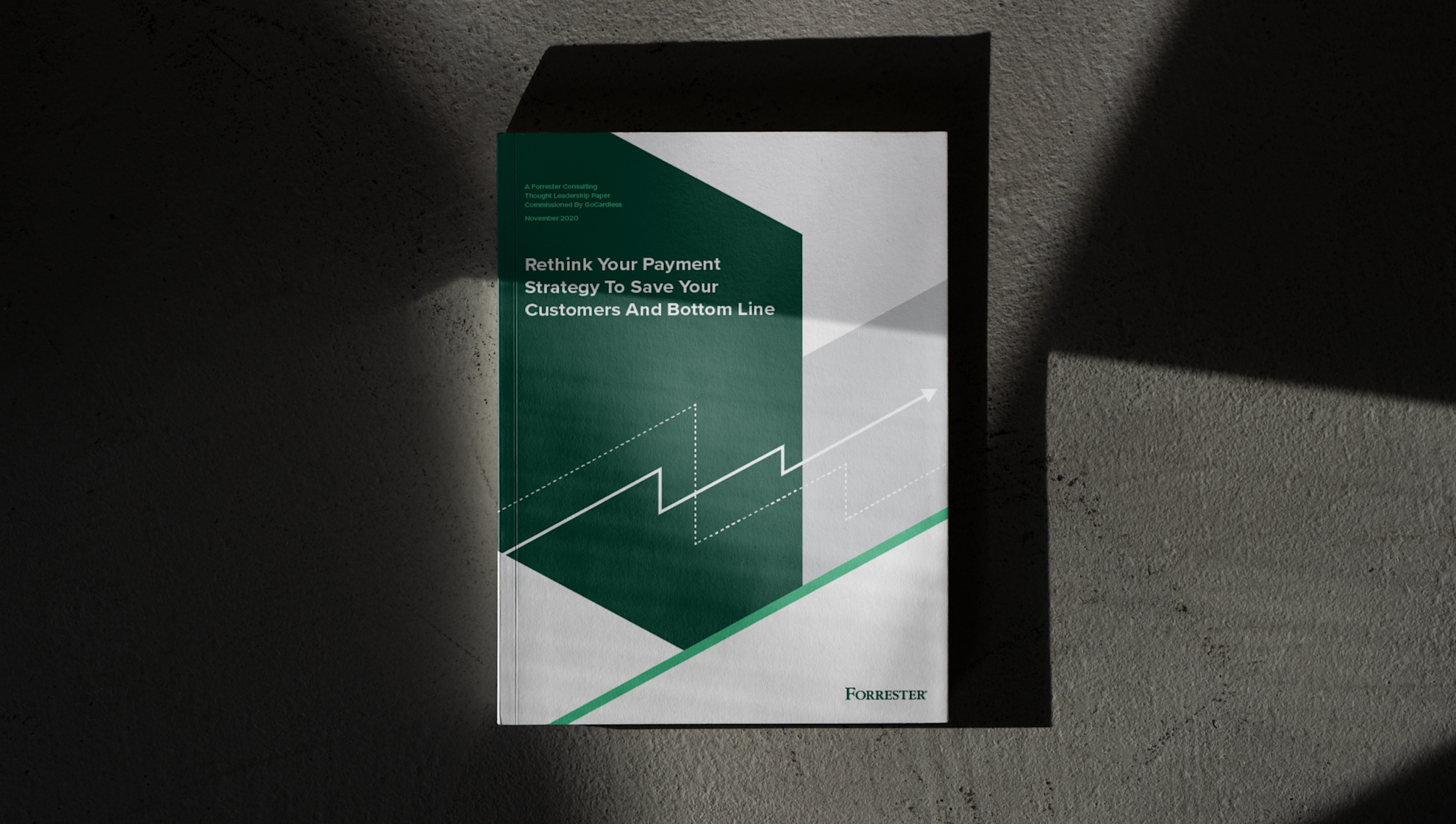4 key insights from our new Forrester Consulting thought leadership paper

Last editedOct 20232 min read
GoCardless recently commissioned Forrester Consulting to evaluate the state of recurring payments across the globe. Forrester conducted an in-depth survey of 700 payment decision-makers in businesses with B2B revenue streams (either B2B-only or a combination of B2B and B2C). The survey included businesses from the US, UK, France, Germany and Australia; looking primarily at SaaS, financial services, business services and IT/technology industries. Every business in the survey has an annual revenue of over $100 million.
We’re delighted to launch the full thought leadership paper, titled:
Rethink Your Payment Strategy To Save Your Customers And Bottom Line.
You can download the full paper here. But if you’re just after the key insights - the most important lessons you should take back to your own business - then read on. We’ve compiled four of the biggest takeaways from the paper, as well as how the data looks in the US, specifically.
1. The current recurring payments landscape is convoluted, causing serious operational challenges
We live in a world where technological advancements drive businesses to change how they add value to their customers. And modern business is changing the way B2B and B2C payments are made. But, as more merchants change their business models, sell in more countries, and accept more payment methods, the payment landscape has become convoluted. For example, over 60% of payment decision-makers say that the most time-consuming areas are matching payments to invoices and reconciling reporting from different gateways/processors. This shows just how much of a drain recurring payment operations can be without the right payment processor(s).
It’s, therefore, no surprize that many firms have large teams to manage complex payment operations. In the US, 85% have more than 20 full-time employees (FTEs) to handle recurring payments.
2. Slow payment intake is a particularly tricky challenge for many businesses
Over 80% of US business leaders say it takes them more than 20 days to receive payment and state that it's a high or critical priority to fix. And DSO seems to be getting worse. Over half of US respondents report that time to receive payments has increased over the last 12 months.
But what’s causing these high DSO numbers? To put it simply, a combination of complex banking rules and procedures and time-consuming manual processes. 60% of firms said that matching payments to invoices and reconciling reporting from different gateways/processors is a huge inconvenience. And 80% of US decision makers say that reducing DSO is high or critically high on their agenda.
3. Businesses typically have high failure rates, affecting the bottom line (while also increasing churn and bad debt)
One standout finding from the Forrester shows that half of all businesses have a failure rate of higher than 7%.
This is roughly in line with our own Payment Success Index, which found businesses primarily collecting using credit cards have failure rates of 7.9%. On the other hand, GoCardless payments (powered by ACH Pull), have average failure rates of just 2.7%.
The results not only prove how widespread the problem is but also the knock-on effects that high failure rates can have on a business’ overall success. For example
On average, businesses with B2C revenue see 11%-15% of their failed payments turn into bad debt (in the UK, the figure is 16-20%)
On average, B2B businesses also see 11%-15% of their failed payments turn into bad debt
On average, Failed payments result in churn 11%-15% of the time
On average, B2B businesses spend 16%-20% of the payment value to recover the payment.
On average, Businesses that are a mix of B2B and B2C spend 11-15% of the payment value to recover the payment
In short, failed payments can quickly become a drain on the bottom line if not kept under control.
4. Businesses recognize the importance of recurring payment solutions when optimising their payment strategies.
Businesses are finally starting to realize that payments need to be treated as a strategic imperative, rather than a cost centre. In fact, nearly 60% of firms are planning to invest in or expand/upgrade investment in recurring payment providers.
By adopting upgraded recurring payment solutions, organisations are aiming to drive growth and deliver excellent customer service. This means these same organisations expect several benefits from their investment, including:
Improved customer retention (44%)
Reduced payment failures (41%)
Reduced churn (38%)
Reduction in DSO (43%)
Less time chasing unpaid invoices (40%)
